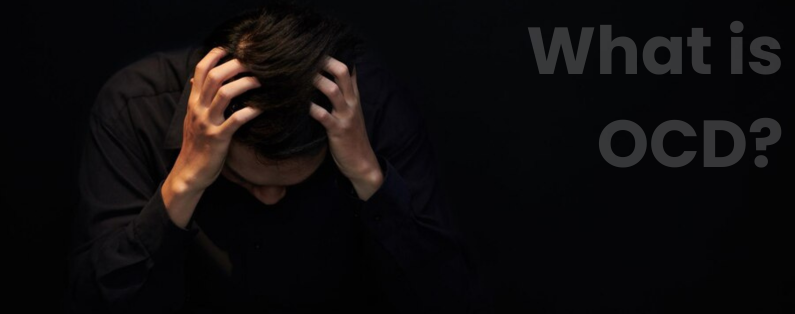Understanding OCD: Definition, Presentation, and Treatment
Obsessive-Compulsive Disorder (OCD) is a prevalent and complex mental health condition that affects millions of people worldwide. It is characterized by a combination of distressing obsessions and compulsions that significantly impact an individual's daily life. In this article, we will delve into the definition of OCD, provide examples of how it presents, and discuss the available treatment options.

Defining OCD
OCD, short for Obsessive-Compulsive Disorder, is a chronic mental health condition that falls within the category of anxiety disorders. It is characterized by the presence of two main components: obsessions and compulsions. Obsessions are intrusive, distressing, and persistent thoughts, images, or urges that repeatedly enter an individual's mind. These obsessions often cause significant anxiety or distress. Compulsions, on the other hand, are repetitive behaviors or mental acts that an individual feels compelled to perform in response to the obsessions. The compulsions are aimed at reducing the distress or preventing a dreaded event, even though they may not be realistically connected to the situation.
How OCD Presents
OCD presents in various ways and can affect people differently. Here are some examples of how it may manifest:
1. Contamination Obsessions and Cleaning Compulsions: An individual with OCD may obsess over germs, disease, or contamination. This obsession can lead to excessive handwashing, cleaning, or avoidance of perceived sources of contamination.
2. Checking Obsessions and Compulsions: Some individuals may obsessively worry about their home's safety, such as leaving the stove on or the doors unlocked. To alleviate these concerns, they engage in repetitive checking rituals.
3. Symmetry and Order Obsessions and Compulsions: These obsessions lead individuals to fixate on arranging objects or performing activities symmetrically or in a specific order. Failure to do so may result in heightened anxiety.
4. Harm Obsessions and Mental Compulsions: Individuals may experience intrusive thoughts about causing harm to others or themselves. They may counter these thoughts with mental rituals or reassurance-seeking behaviors.
5. Hoarding Disorder: Hoarding is a specific subtype of OCD where individuals accumulate excessive amounts of possessions and have great difficulty discarding them, often resulting in a cluttered living space.
6. Religious or Scrupulosity Obsessions: Some people with OCD may struggle with obsessions related to religious or moral concerns, such as fearing they have committed sins. They may engage in rituals like prayer or confession to seek relief.
Treating OCD
Effective treatment is available for OCD, and individuals can regain control over their lives. Here are some common approaches:
1. Cognitive-Behavioral Therapy (CBT): Exposure and Response Prevention (ERP) is a specific type of CBT commonly used to treat OCD. ERP involves gradually exposing individuals to their obsessions while preventing the corresponding compulsions. Over time, this helps reduce the anxiety associated with obsessions.
2. Inference-Based Cognitive Behavioral Therapy (I-CBT): Inference-based Cognitive Behavioral Therapy (CBT) for OCD, often referred to as IB-CBT, is a specialized therapeutic approach designed to address Obsessive-Compulsive Disorder (OCD). It focuses on targeting and modifying the cognitive distortions and irrational beliefs that underlie OCD symptoms. This therapy involves identifying and challenging the obsessive interpretations and inferences made by individuals with OCD, ultimately helping them reframe their thought processes to reduce anxiety and compulsive behaviors. IB-CBT emphasizes restructuring the way individuals perceive their intrusive thoughts and teaching them to differentiate between rational and irrational inferences, enabling more effective coping and reducing the impact of OCD on daily life.
3. Medication: In some cases, psychiatrists may prescribe medication, such as selective serotonin reuptake inhibitors (SSRIs), to help alleviate the symptoms of OCD. Medication is often used in combination with therapy for maximum effectiveness.
4. Support Groups: Joining support groups or seeking therapy with a trained mental health professional specializing in OCD can provide individuals with a sense of community and guidance for managing their condition.
5. Lifestyle Modifications: Adopting a healthy lifestyle that includes regular exercise, a balanced diet, and adequate sleep can help improve overall mental well-being and reduce the impact of OCD.
6. Mindfulness and Relaxation Techniques: Practices such as mindfulness meditation and deep breathing exercises can help individuals manage their anxiety and obsessive thoughts.

Conclusion
OCD is a challenging and often debilitating condition that can significantly affect a person's life. However, with the right treatment and support, individuals can learn to manage their symptoms effectively. Understanding OCD, its definition, presentation, and available treatments is crucial for those living with the condition and for their loved ones. Seeking help from mental health professionals and engaging in treatment can be pivotal in regaining control over one's life and breaking free from the grip of obsessive-compulsive disorder.